Introduction to Permaculture Garden Design
Welcome to the world of permaculture garden design, where the harmony between nature and human needs is not just a dream but a practical reality! Imagine stepping into a garden that not only provides you with fresh produce but also supports a thriving ecosystem, attracts wildlife, and requires minimal maintenance. Sounds magical, right? Well, that’s the essence of permaculture! This innovative approach to gardening focuses on sustainable practices that work with nature rather than against it, promoting a self-sustaining environment that benefits both you and the planet.
At its core, permaculture is about designing your garden to mimic natural ecosystems. By observing how nature operates, we can create gardens that are not only productive but also resilient. Think of your garden as a mini-ecosystem where every plant, animal, and element has a role to play. Just like a well-orchestrated symphony, each component contributes to the overall harmony and balance. This article will delve into the principles and practices of permaculture garden design, highlighting its benefits, techniques, and how it fosters sustainable living and biodiversity in our environments.
Why should you consider permaculture? Well, first off, it's all about reducing our ecological footprint. Traditional gardening methods often lead to soil depletion, water waste, and increased reliance on chemical fertilizers and pesticides. In contrast, permaculture encourages practices like composting, mulching, and crop rotation, which enhance soil health and biodiversity. Plus, by implementing water management strategies like rainwater harvesting, you can create a garden that thrives even in dry spells.
In this journey through permaculture, we will explore essential principles that guide this sustainable practice, the intricacies of designing your garden, and the myriad benefits that come with it. Whether you're a seasoned gardener or a curious beginner, this guide will equip you with the knowledge to create your own flourishing permaculture garden. So, grab your gardening gloves, and let’s dig into the wonderful world of permaculture!
- What is permaculture? Permaculture is a design philosophy that aims to create sustainable and self-sufficient agricultural systems by mimicking the patterns and relationships found in nature.
- Can I start a permaculture garden in a small space? Absolutely! Permaculture can be adapted to any space, whether it’s a small balcony or a large backyard.
- What are some common plants used in permaculture? Common plants include native species, perennial vegetables, and companion plants that support each other’s growth.
- How does permaculture benefit the environment? Permaculture promotes biodiversity, reduces waste, conserves water, and enhances soil health, contributing to a healthier ecosystem.
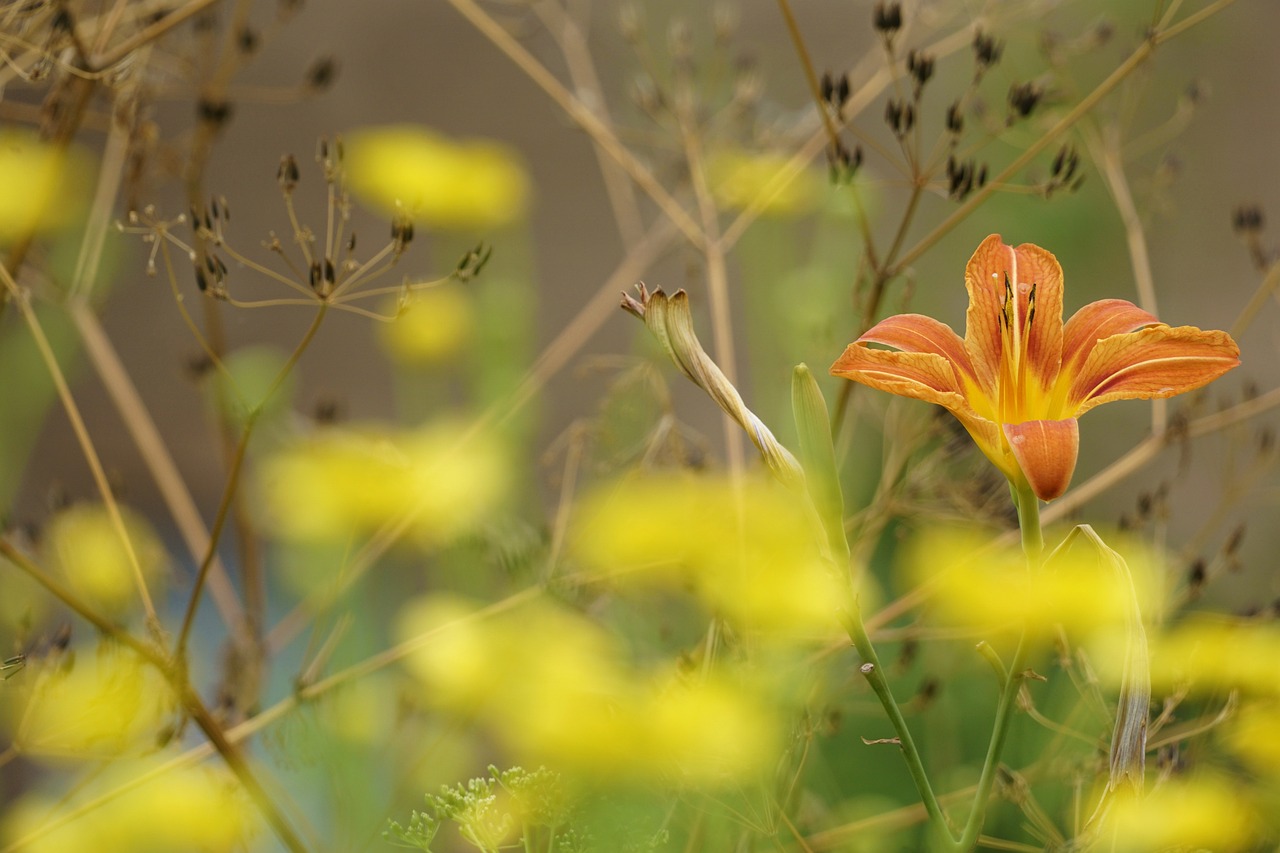
Principles of Permaculture
Understanding the core is essential for effective garden design. These principles serve as a compass, guiding sustainable practices that work in harmony with nature rather than against it. Imagine your garden as a miniature ecosystem, where every element plays a role in promoting ecological balance and resilience. At the heart of permaculture lies a deep respect for the environment, encouraging us to observe and learn from the natural world around us.
The foundational principles of permaculture can be summarized into several key ideas, each contributing to a holistic approach to gardening:
- Observe and Interact: Take the time to observe your environment. Understanding the natural patterns and behaviors of plants, animals, and weather will guide your design choices.
- Catch and Store Energy: Design your garden to maximize the capture of energy, whether it's sunlight, rainwater, or nutrients. This could mean using solar panels or creating a rain garden.
- Obtain a Yield: Ensure that your garden provides tangible benefits, whether it's food, herbs, or medicinal plants. A successful permaculture garden should be productive and rewarding.
- Apply Self-Regulation and Accept Feedback: Monitor your garden's performance and be willing to make changes based on what works and what doesn’t. This adaptive approach fosters continuous improvement.
- Use and Value Renewable Resources: Focus on using materials and resources that can be replenished naturally, such as compost, rainwater, and native plants.
- Produce No Waste: Design systems that recycle nutrients and materials, reducing waste and enhancing the sustainability of your garden.
- Design from Patterns to Details: Start with the big picture, identifying the overall layout and flow of your garden, before diving into the specifics of plant selection and placement.
- Integrate Rather than Segregate: Create relationships between different elements in your garden. For instance, planting companion plants that benefit each other can enhance growth and pest resistance.
- Use Small and Slow Solutions: Focus on small-scale, manageable projects that can be expanded over time. This approach minimizes risk and allows for experimentation.
- Value Diversity: A diverse garden is a resilient garden. Incorporate a variety of plants, animals, and microorganisms to create a balanced ecosystem.
- Use Edges and Value the Marginal: The edges of ecosystems, such as where a garden meets a forest, are often the most productive areas. Utilize these spaces effectively.
- Creatively Use and Respond to Change: Embrace change as a natural part of gardening. Adapt your practices to respond to evolving conditions and challenges.
By applying these principles, you can create a thriving permaculture garden that not only provides for you and your family but also contributes positively to the environment. Each principle is interconnected, much like the elements of your garden. For example, when you catch and store energy through rainwater harvesting, you enhance your garden's ability to obtain a yield, while also minimizing waste. This is the beauty of permaculture—it’s a synergistic approach that fosters sustainability and biodiversity.
As you embark on your permaculture journey, remember that the goal is not just to grow food, but to cultivate a deeper connection with nature. By adhering to these principles, you’ll be well on your way to creating a garden that reflects the harmony and resilience of the natural world.
Q: What is permaculture?
A: Permaculture is a design system that seeks to create sustainable and self-sufficient agricultural ecosystems by following the natural patterns of the environment.
Q: Can I start a permaculture garden in a small space?
A: Absolutely! Permaculture principles can be applied to any size garden, even small urban spaces. Vertical gardening and container gardening are great options.
Q: How long does it take to establish a permaculture garden?
A: The timeline can vary based on the size and complexity of the garden, but it typically takes a few seasons to see significant results. Patience is key!
Q: Is permaculture expensive to start?
A: While there may be some initial costs, permaculture can be very cost-effective in the long run due to its focus on sustainability and resource efficiency.
Q: How can I learn more about permaculture?
A: There are many resources available, including books, online courses, and local workshops. Joining a permaculture community can also provide valuable support and knowledge.
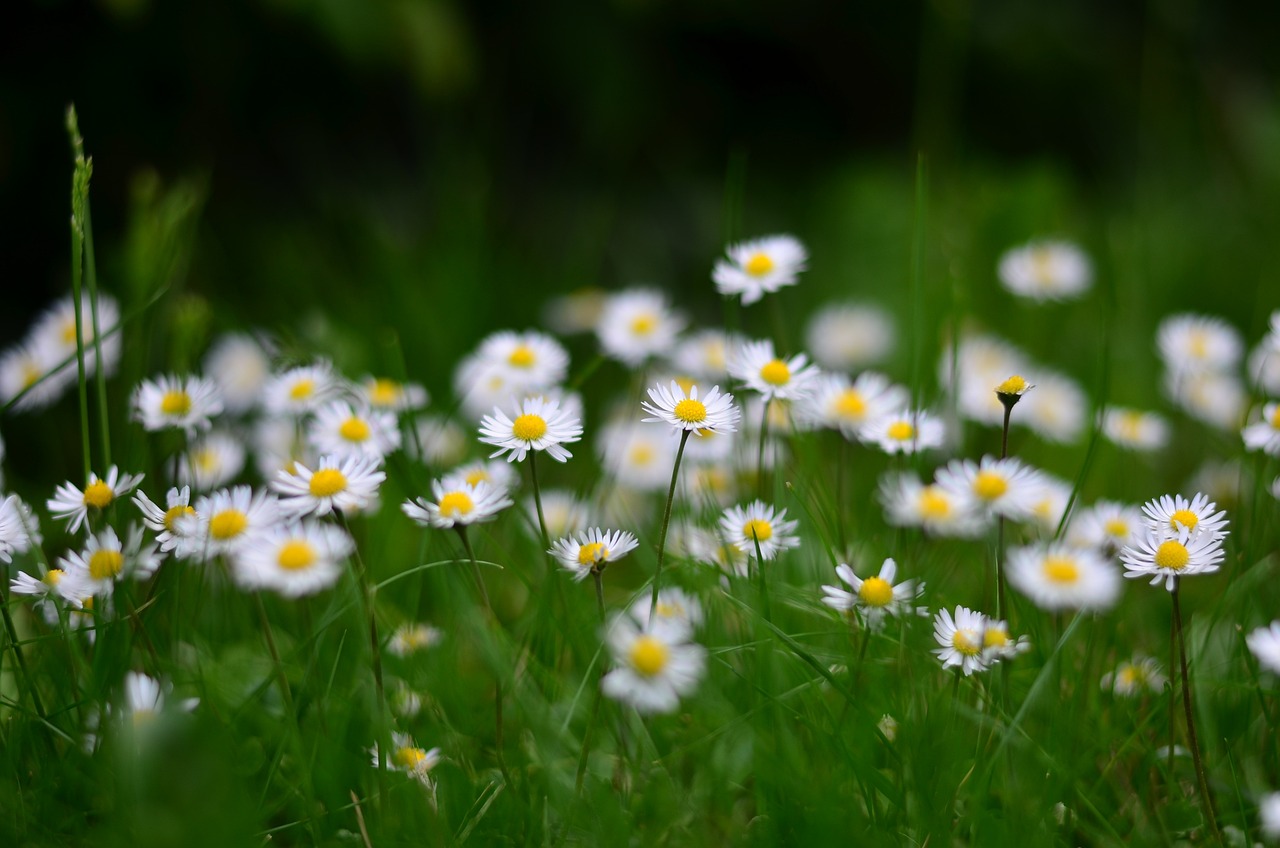
Designing Your Permaculture Garden
Creating a permaculture garden is an exciting journey that invites you to rethink how you interact with your environment. It’s not just about planting a few seeds; it’s about crafting a living ecosystem that thrives on natural processes. Before you dive in, it's essential to take a step back and plan your garden thoughtfully. This involves considering the layout, selecting the right plants, and zoning your space effectively to maximize productivity while minimizing waste. Think of your garden as a miniature ecosystem where every element plays a vital role in supporting life.
One of the first steps in designing your permaculture garden is conducting a thorough site analysis. This means taking a good look at your space and asking some critical questions: How much sunlight does different areas receive throughout the day? Where are the water sources, and how do they flow? What is the quality of your soil, and what existing vegetation can you build upon? By understanding these factors, you can create a garden layout that works with nature instead of against it.
In your site analysis, consider creating a simple table to summarize your findings:
| Factor | Details |
|---|---|
| Sunlight | Full sun, partial shade, or full shade areas |
| Water Sources | Natural springs, rainwater collection, or irrigation systems |
| Soil Quality | Clay, sandy, loamy, or rocky soil |
| Existing Vegetation | Native plants, weeds, or trees |
Once you have a clear picture of your site, you can start to think about soil health. Healthy soil is the foundation of a successful permaculture garden. Techniques such as composting, mulching, and crop rotation are essential for improving soil fertility. Composting not only enriches the soil but also reduces waste by recycling kitchen scraps and yard debris. Mulching helps retain moisture and suppress weeds, while crop rotation prevents soil depletion and pest buildup.
Another critical aspect of your design is water management. In permaculture, we aim to use water efficiently and sustainably. Consider implementing methods like rainwater harvesting, which can significantly reduce your reliance on municipal water systems. Swales, which are shallow trenches designed to capture and slow down water runoff, can also improve water retention in your garden. By integrating these strategies, you create a system that conserves water while nurturing your plants.
When it comes to plant selection, it's vital to choose plants that not only thrive in your specific conditions but also support the overall ecosystem. Companion planting is a fantastic way to enhance biodiversity and pest control. For instance, planting marigolds alongside vegetables can deter harmful insects while attracting beneficial ones. Additionally, incorporating native species and perennial crops into your garden can create a self-sustaining environment that requires less maintenance over time.
As you design your permaculture garden, remember that it’s a dynamic process. It will evolve as you learn more about your space and the plants you choose. Embrace the surprises and challenges that come your way, and watch as your garden transforms into a flourishing ecosystem that reflects the beauty and resilience of nature.
- What is permaculture?
Permaculture is a design philosophy that focuses on creating sustainable and self-sufficient agricultural systems by working with nature. - How do I start a permaculture garden?
Begin by performing a site analysis, improving soil health, managing water efficiently, and selecting appropriate plants. - Can I practice permaculture in a small space?
Absolutely! Permaculture principles can be applied to any size space, including balconies and small backyards. - What are the benefits of permaculture?
Permaculture promotes biodiversity, reduces environmental impact, enhances food security, and fosters community resilience.
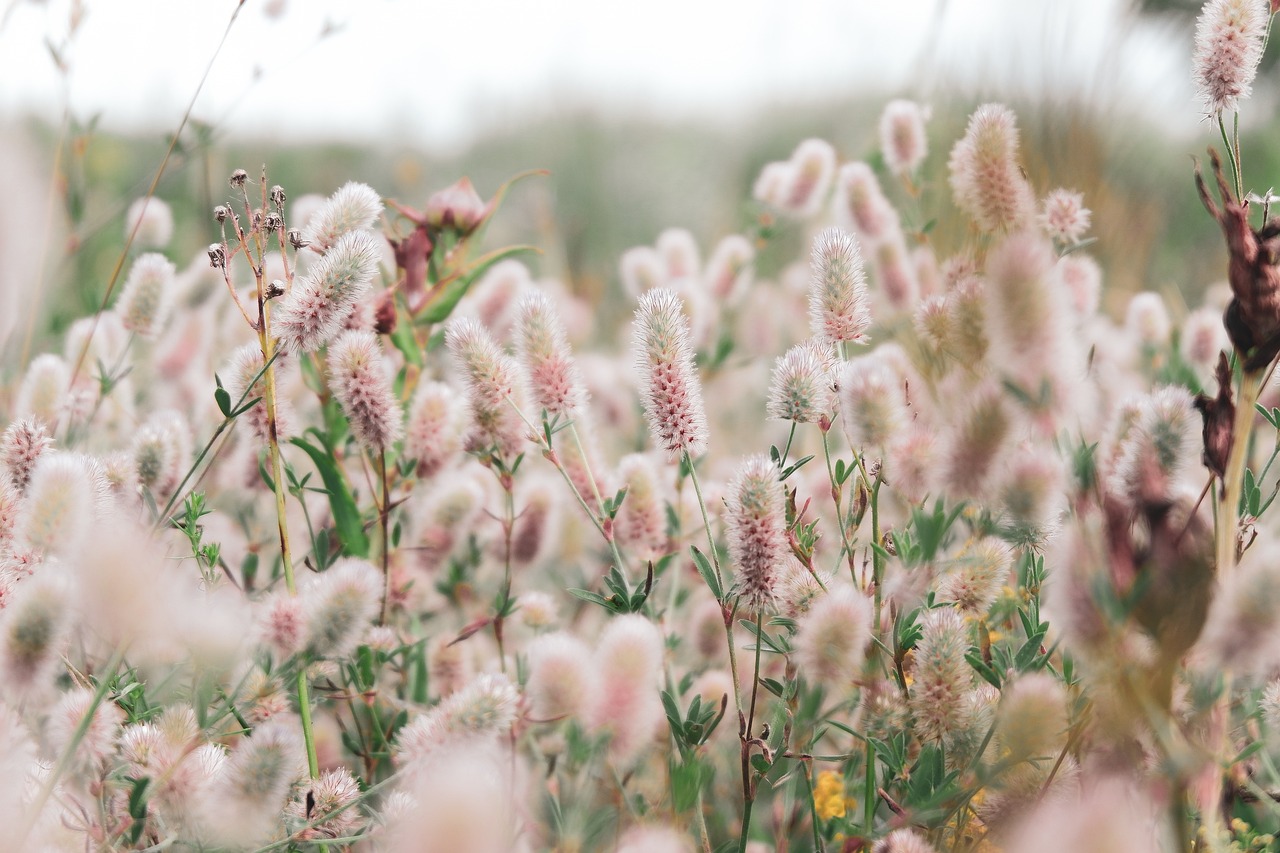
Site Analysis
Conducting a thorough is a fundamental step in creating a successful permaculture garden. It’s like laying the groundwork for a masterpiece; without understanding your canvas, your design may not flourish as intended. So, what exactly should you be looking for when assessing your garden space? Well, let’s dive into the essential elements that will guide your design choices and ensure your plants thrive.
First and foremost, consider the sunlight your site receives. Different plants have varying light requirements—some thrive in full sun, while others prefer partial shade. Observing how sunlight shifts across your garden throughout the day can help you determine the best spots for planting. It’s almost like playing a game of hide and seek with the sun, and you want to find the perfect hiding spots for your plants!
Next up is water sources. Understanding the availability and flow of water in your garden is crucial. Are there natural springs, ponds, or streams nearby? Do you have access to rainwater? By mapping out the water sources, you can design your garden to optimize irrigation and minimize water waste. Imagine your plants as thirsty travelers; you want to ensure they have a reliable source of hydration!
Another key factor to analyze is the soil quality. Healthy soil is the lifeblood of any garden, especially in permaculture where we aim to build a self-sustaining ecosystem. Conducting soil tests can reveal its pH level, nutrient content, and texture. You can think of soil as the foundation of a house; without a solid base, everything else may crumble. If your soil is lacking, consider implementing techniques such as composting or mulching to enhance its fertility.
Lastly, take note of any existing vegetation. Are there native plants or trees that you can incorporate into your design? These plants are already adapted to your local environment and can provide habitat for wildlife, contributing to the biodiversity of your garden. It’s like inviting your neighbors over for a block party—everyone benefits from the gathering!
To sum it all up, a comprehensive site analysis involves examining sunlight, water sources, soil quality, and existing vegetation. By taking the time to understand these elements, you set the stage for a thriving permaculture garden that works in harmony with nature. Remember, this isn’t just about planting seeds; it’s about creating a resilient ecosystem that can adapt and flourish over time.
- What is site analysis in permaculture? Site analysis involves assessing various environmental factors in your garden space, such as sunlight, water sources, soil quality, and existing vegetation, to inform your design choices.
- Why is sunlight important for my garden? Different plants have varying light requirements, and understanding how sunlight interacts with your garden helps you choose the right spots for planting.
- How can I improve my soil quality? Techniques such as composting, mulching, and crop rotation can enhance soil fertility and support plant growth.
- What role do native plants play in permaculture? Native plants are adapted to local conditions and can provide habitat for wildlife, promoting biodiversity in your garden.
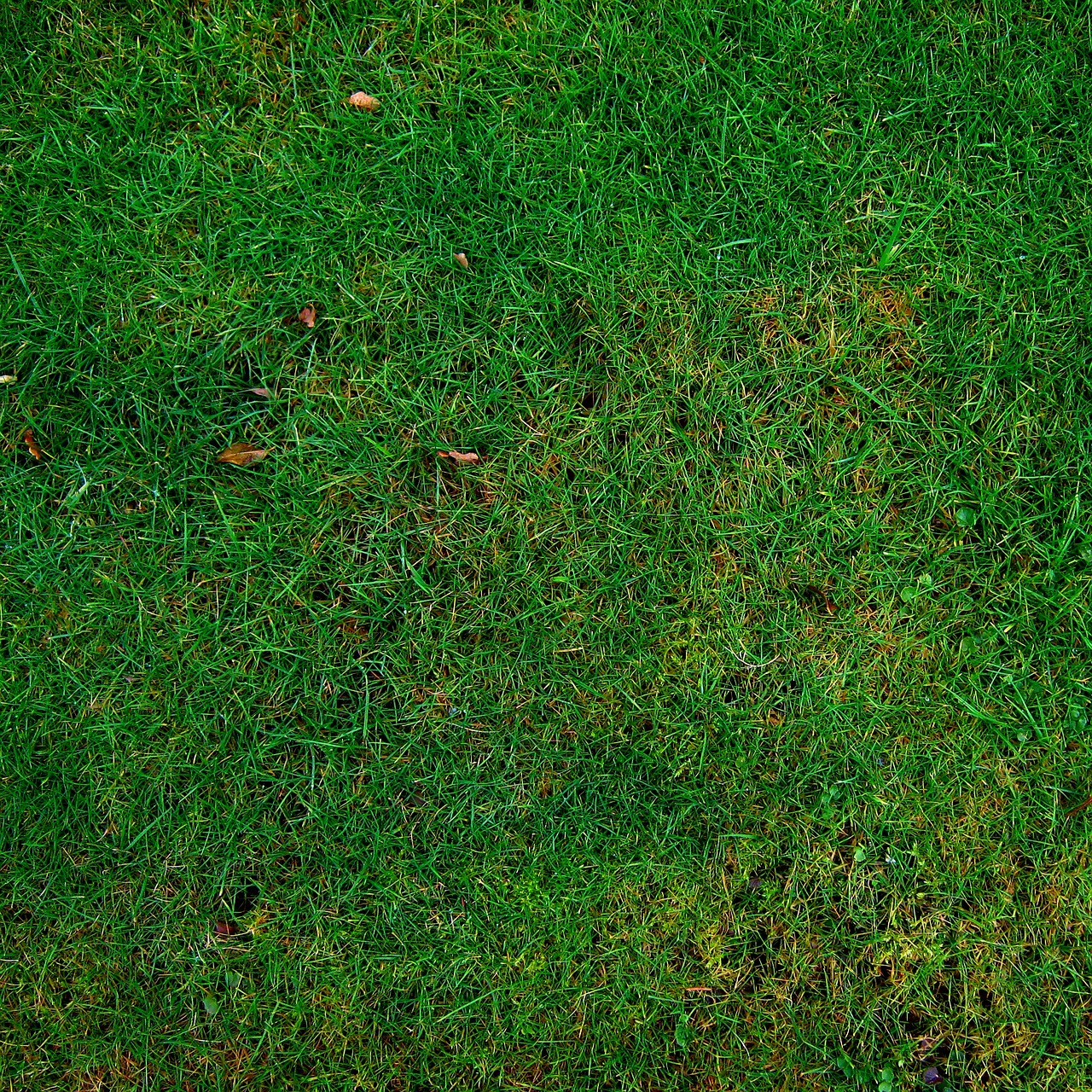
Soil Health
Healthy soil is the cornerstone of any successful permaculture garden. It's not just about having dirt; it's about nurturing a living ecosystem beneath your feet. Think of soil as a vibrant community where countless organisms work together to create a robust environment for plants to thrive. When you invest in soil health, you're essentially investing in the entire garden's productivity and sustainability.
To achieve optimal soil health, several techniques can be employed. One of the most effective methods is composting. This process transforms organic waste into nutrient-rich compost that feeds the soil, enhancing its fertility. Imagine turning kitchen scraps and yard waste into gold for your garden! By incorporating compost into your soil, you improve its structure, moisture retention, and nutrient content.
Another vital practice is mulching. Applying a layer of organic material, such as straw or wood chips, helps to regulate soil temperature, suppress weeds, and retain moisture. It’s like giving your soil a cozy blanket that keeps it warm in winter and cool in summer. Plus, as the mulch breaks down, it adds even more nutrients back into the soil.
Crop rotation is also crucial for maintaining soil health. By alternating the types of crops you plant in specific areas, you can prevent nutrient depletion and reduce the risk of pests and diseases. For instance, if you grow legumes one season, they can naturally fix nitrogen in the soil, which benefits the following crops that require higher nitrogen levels. This method promotes a balanced ecosystem, minimizing the need for synthetic fertilizers.
In addition to these practices, it’s essential to regularly test your soil. Understanding its pH, nutrient levels, and organic matter content allows you to make informed decisions about amendments and planting strategies. A simple soil test can reveal a wealth of information, guiding you on how to improve your garden's health and productivity.
Ultimately, nurturing soil health is about creating a sustainable cycle where everything is interconnected. Healthy soil leads to healthy plants, which in turn support a diverse array of wildlife. This biodiversity is not just beautiful; it plays a crucial role in pest control and pollination, further enhancing the resilience of your garden.
- What is the best way to improve soil health? Regular composting, mulching, and crop rotation are effective methods to enhance soil health.
- How often should I test my soil? It's recommended to test your soil at least once a year, especially before planting season.
- Can I use chemical fertilizers in a permaculture garden? While it's possible, permaculture emphasizes natural methods to maintain soil health and promote sustainability.
- What types of mulch are best for my garden? Organic mulches such as straw, wood chips, or grass clippings are excellent choices as they break down and enrich the soil over time.
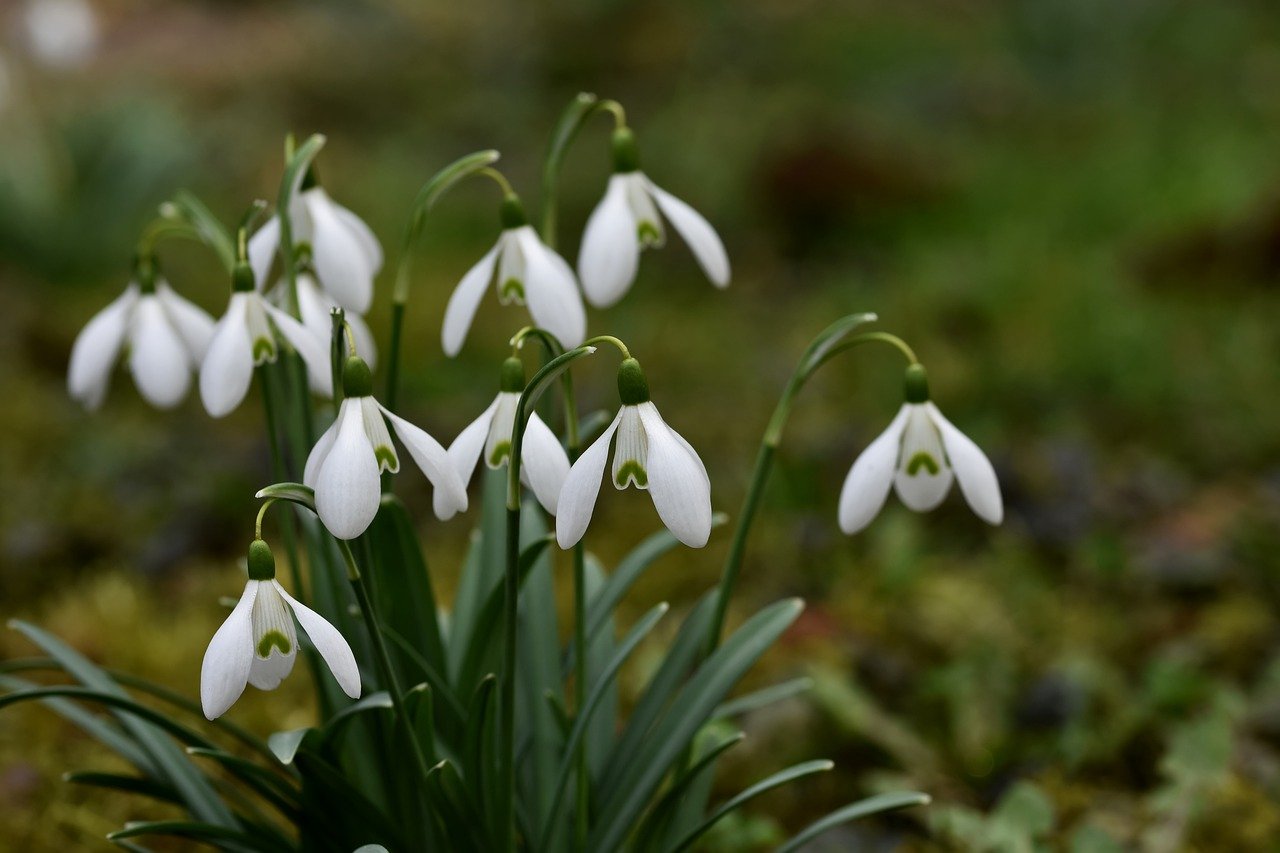
Water Management
Effective is a cornerstone of permaculture garden design. It’s not just about having enough water; it's about using it wisely and sustainably. Imagine your garden as a living organism, where every drop of water plays a vital role in its health and productivity. By implementing smart water management strategies, you can create a thriving ecosystem that conserves resources while promoting growth.
One of the most effective techniques in permaculture is rainwater harvesting. This method involves capturing rainwater from rooftops and directing it into storage systems. Not only does this reduce reliance on municipal water supplies, but it also minimizes runoff and erosion. Think of it as nature’s way of providing you with free irrigation! You can set up barrels or cisterns to store this precious resource, ensuring you have water available during dry spells.
Another essential strategy is the use of swales, which are shallow, vegetated ditches designed to slow down and capture water runoff. By strategically placing swales on your property, you can direct water to where it’s needed most, allowing it to seep into the soil rather than running off and being wasted. This technique not only helps in water conservation but also promotes soil health by preventing erosion and enhancing groundwater recharge.
Moreover, understanding your garden's microclimates can significantly improve water management. Different areas of your garden may have varying sun exposure, wind patterns, and moisture levels. By observing these conditions, you can make informed decisions about where to plant specific species that are more tolerant of dry conditions or where to place water-retaining materials. For instance, grouping plants with similar water needs together can lead to more efficient watering practices.
To further enhance your water management practices, consider implementing mulching. This technique involves covering the soil surface with organic materials like straw, wood chips, or leaves. Mulching not only helps retain moisture in the soil, reducing the need for frequent watering, but it also suppresses weeds and improves soil health as it decomposes. It's like giving your garden a protective blanket that nurtures it while saving you time and effort.
Lastly, it’s crucial to monitor your water usage and adjust your practices accordingly. Keeping a record of rainfall, irrigation, and plant growth can help you identify patterns and make necessary changes. This ongoing evaluation ensures that your permaculture garden remains resilient and adaptable to changing environmental conditions.
- What is the best way to collect rainwater? You can use rain barrels connected to your downspouts for easy collection.
- How do swales help in water management? Swales slow down water runoff, allowing it to soak into the soil and prevent erosion.
- Can mulching really reduce the need for watering? Yes, mulching helps retain moisture in the soil, significantly reducing the frequency of watering needed.
- What plants are best for dry areas in my garden? Drought-resistant plants like lavender, succulents, and native grasses are excellent choices.

Plant Selection
Choosing the right plants for your permaculture garden is not just about aesthetics; it's about creating a harmonious ecosystem that thrives on its own. When you think about plant selection, consider it like assembling a team for a sports match. Each player (or plant) has unique strengths and roles that contribute to the overall success of the game. In permaculture, we want plants that not only coexist but also support one another in a mutually beneficial relationship.
One of the key strategies in plant selection is companion planting. This practice involves pairing plants that enhance each other's growth. For example, planting tomatoes with basil not only improves the flavor of the tomatoes but also helps repel pests. Similarly, the classic trio of corn, beans, and squash, known as the “Three Sisters,” exemplifies how plants can work together. Corn provides a natural support for beans to climb, beans fix nitrogen in the soil, and squash spreads out to shade the ground, reducing weeds. This synergy is what makes permaculture so magical!
Another important aspect is the use of native species. Choosing plants that are indigenous to your area can significantly enhance biodiversity and resilience in your garden. Native plants are already adapted to the local climate and soil conditions, making them easier to grow and maintain. They also provide habitat and food for local wildlife, including pollinators like bees and butterflies, which are essential for the health of any garden. Imagine your garden as a mini-ecosystem, where every plant plays a crucial role in supporting life around it.
Furthermore, consider incorporating perennial crops into your design. Unlike annuals, which require replanting each year, perennials come back season after season, reducing labor and soil disturbance. Some excellent examples of perennial crops include asparagus, rhubarb, and various fruit trees. These plants not only contribute to a sustainable garden but also offer a sense of permanence and stability, which can be incredibly rewarding for gardeners.
When selecting plants, it's also vital to think about their growth habits and how they will fit into your garden's layout. For instance, taller plants should be positioned in a way that they do not shade out shorter plants. This thoughtful arrangement ensures that every plant receives adequate sunlight. Additionally, consider the seasonality of your plants. A mix of early, mid, and late-season crops can provide a continuous harvest throughout the year, maximizing productivity and enjoyment.
In summary, the art of plant selection in permaculture is about more than just picking pretty flowers. It's about creating a dynamic, self-sustaining ecosystem that thrives on interdependence. By focusing on companion planting, native species, and perennials, you can design a garden that not only looks beautiful but also contributes to a healthier environment. So, the next time you're at the nursery, think of yourself as a coach assembling a championship team, and choose your plants wisely!
- What are companion plants? Companion plants are species that benefit each other when grown together, enhancing growth, deterring pests, and improving yields.
- Why should I use native plants? Native plants are adapted to local conditions and provide habitat for wildlife, making them easier to care for and more beneficial to the ecosystem.
- What are perennial crops? Perennial crops are plants that live for more than two years, returning each season without the need for replanting, which saves time and effort.
- How do I arrange plants in my garden? Consider the height, sunlight needs, and growth habits of each plant to ensure they complement each other and receive the necessary light and space.
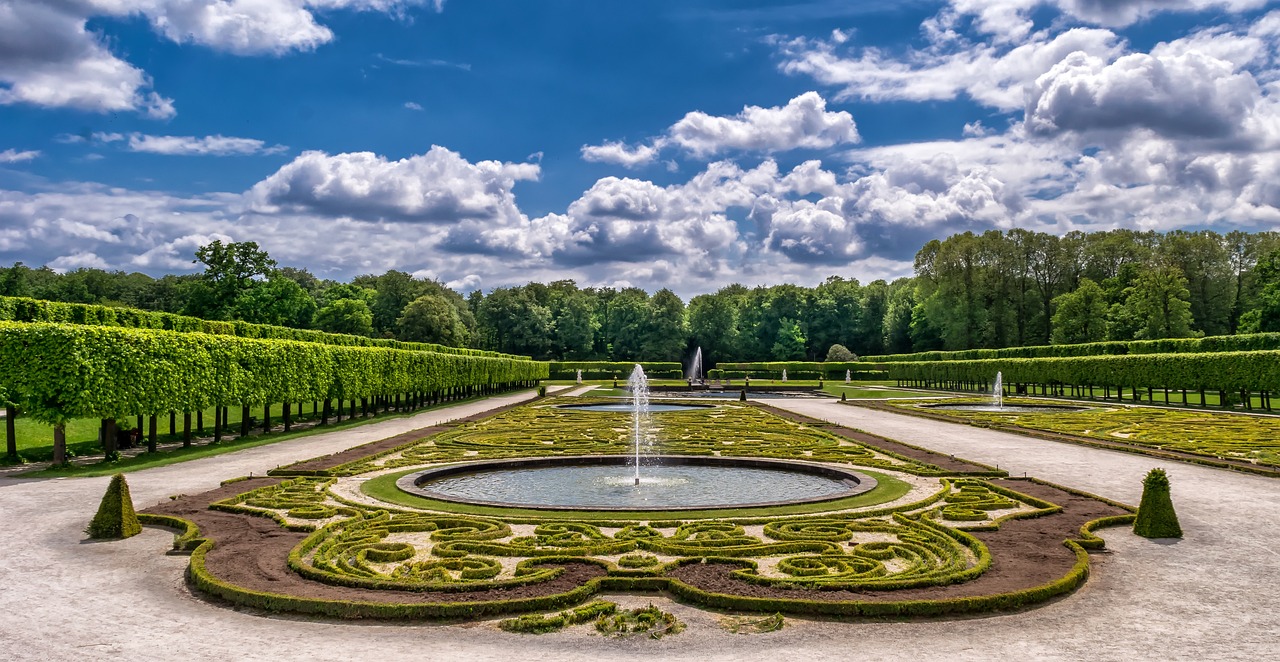
Benefits of Permaculture
Implementing permaculture design offers a plethora of benefits that extend beyond just the garden. By embracing this holistic approach, we can enhance biodiversity, reduce our environmental footprint, and promote food security. Imagine a world where gardens are not just patches of green, but thriving ecosystems that support a variety of life forms. This is the essence of permaculture, and its benefits are as diverse as the plants it nurtures.
One of the most significant advantages of permaculture is its ability to increase biodiversity. Unlike traditional monoculture farming, which often leads to the depletion of soil nutrients and increased pest problems, permaculture encourages a diverse range of plants and animals to coexist. This diversity creates a balanced ecosystem, where natural predators can manage pest populations and plants can support one another through companion planting. For instance, planting legumes alongside corn can enhance soil fertility while providing necessary support for the taller plants.
Moreover, permaculture practices significantly reduce environmental impact. By utilizing techniques such as rainwater harvesting and composting, we can minimize waste and conserve precious resources. Did you know that a well-designed permaculture garden can reduce water usage by up to 50% compared to conventional gardens? This is achieved through methods like swales, which are designed to capture and retain rainwater, allowing it to seep into the soil gradually. This not only benefits the plants but also helps recharge the groundwater supply.
Another key benefit is the enhancement of food security. In a world where food systems are often fragile and susceptible to market fluctuations, permaculture offers a sustainable solution. By growing a variety of crops, including perennials that produce year after year, gardeners can ensure a steady supply of food. Additionally, permaculture encourages local food production, reducing the need for transportation and the associated carbon footprint. Imagine walking into your backyard and harvesting fresh vegetables and fruits, knowing exactly where they came from and how they were grown.
Permaculture also fosters community engagement. When individuals come together to share knowledge, resources, and produce, they create a supportive network that strengthens community ties. Community gardens, for example, not only provide food but also serve as educational hubs where people can learn about sustainable practices. This collaboration can lead to a greater sense of belonging and shared responsibility for the environment. As we work together, we cultivate not just plants but also relationships that can endure.
Lastly, the long-term sustainability of permaculture systems is a remarkable aspect that cannot be overlooked. These systems are designed to be adaptable and resilient, able to evolve in response to changing environmental and social needs. As we face challenges such as climate change and urbanization, permaculture provides a framework that can help us navigate these issues. By focusing on regenerative practices, we can create landscapes that not only survive but thrive, ensuring that future generations inherit a healthy planet.
- What is permaculture? Permaculture is a design philosophy that mimics natural ecosystems to create sustainable agricultural systems.
- How can I start a permaculture garden? Begin by assessing your site, understanding local climate conditions, and selecting plants that thrive in your area.
- Is permaculture suitable for urban areas? Absolutely! Permaculture can be adapted to small spaces, rooftops, and community gardens in urban settings.
- What are some common permaculture techniques? Techniques include companion planting, rainwater harvesting, and creating swales for water management.
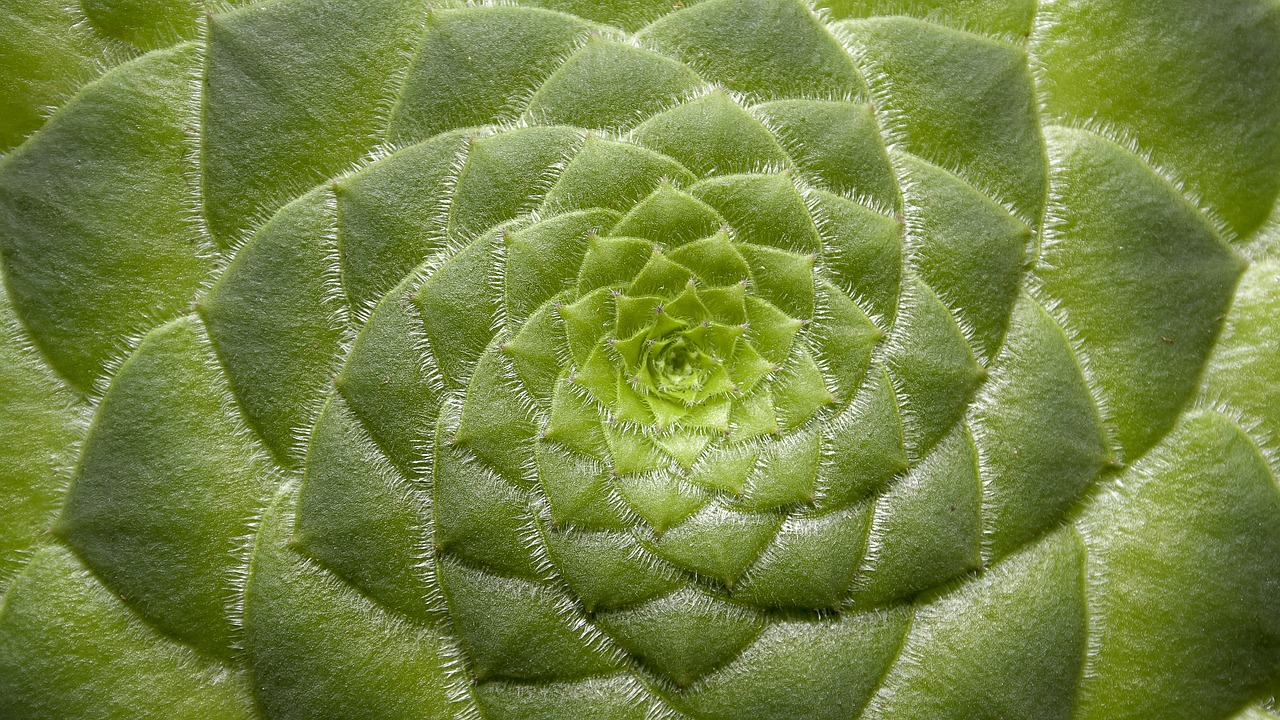
Community Engagement
Community engagement in permaculture gardening is like planting seeds in fertile soil; it fosters growth, connection, and sustainability. When individuals come together to share their knowledge, resources, and produce, they create a vibrant ecosystem that extends beyond the garden itself. Imagine walking through a neighborhood where everyone is involved in their gardens, exchanging fresh vegetables, herbs, and even gardening tips. This not only strengthens the bonds within the community but also enhances the overall resilience of the local environment.
One of the most beautiful aspects of permaculture is its emphasis on collaboration. By engaging with others, you can learn about different gardening techniques, discover new plant varieties, and even participate in community events like seed swaps or garden tours. These activities not only enrich your gardening experience but also promote a sense of belonging. After all, who doesn’t love sharing a freshly picked tomato or a jar of homemade jam with neighbors?
Moreover, community engagement lays the groundwork for sustainable practices that can have a lasting impact. When people work together, they can create shared resources such as community gardens, composting programs, and educational workshops. These initiatives not only provide access to fresh produce but also serve as platforms for learning and sharing best practices. As a result, communities become more self-sufficient and less reliant on external food sources, which is crucial in today's rapidly changing world.
Here are some ways to foster community engagement in your permaculture efforts:
- Organize Workshops: Host workshops on topics like composting, planting techniques, or pest management. This allows community members to learn and share their experiences.
- Create Community Gardens: Establish a shared garden space where everyone can contribute and benefit from the harvest.
- Participate in Local Events: Join local farmers' markets or fairs to showcase your permaculture practices and connect with others.
- Start a Gardening Club: Form a club where members can meet regularly to discuss gardening challenges and successes.
As you can see, community engagement is not just about gardening; it's about building relationships and creating a sustainable future together. The more we collaborate, the stronger our communities become, and the more resilient our ecosystems will be. So, why not reach out to your neighbors and start a conversation about permaculture? You might just discover a shared passion that blossoms into something extraordinary.
Q: What is permaculture?
A: Permaculture is a design philosophy that focuses on creating sustainable and self-sufficient agricultural systems by working with nature rather than against it.
Q: How can I get involved in community permaculture projects?
A: Look for local gardening clubs, community gardens, or workshops in your area. Many cities have organizations dedicated to promoting sustainable practices.
Q: What are the benefits of community engagement in permaculture?
A: Community engagement fosters collaboration, knowledge sharing, and resource pooling, leading to a more resilient and sustainable local food system.
Q: Can I start a permaculture garden in a small space?
A: Absolutely! Permaculture principles can be applied to any size garden, even small urban spaces. Container gardening and vertical gardening are great options.

Long-term Sustainability
When we talk about in permaculture, we're diving deep into a world where nature and human needs coexist harmoniously. Think of it as a dance between the two, where each step is carefully calculated to ensure that neither partner is overworked or neglected. This balance is crucial because, without it, the systems we build may falter under pressure. The beauty of permaculture lies in its ability to adapt and evolve over time, allowing for a resilience that can weather the storms of change—be it climate, social dynamics, or resource availability.
One of the key aspects of long-term sustainability is the principle of observation. By continuously observing our gardens and ecosystems, we can identify what works and what doesn’t. This ongoing assessment allows us to make informed decisions that enhance productivity while minimizing waste. For instance, if a certain plant thrives in your garden while another struggles, it’s essential to understand why. Is it the soil quality? The amount of sunlight? Or perhaps the water availability? By answering these questions, we can adjust our practices accordingly, ensuring a vibrant garden for years to come.
Moreover, permaculture encourages the integration of various elements within the garden. For example, using perennial plants can significantly reduce the need for replanting, thus saving time and resources. These plants not only provide food year after year but also contribute to soil stability and biodiversity. In this way, they create a self-sustaining ecosystem that requires less intervention over time. By focusing on plants that thrive in your specific environment, you can create a garden that is not only productive but also resilient against pests and diseases.
In addition to plant selection, community involvement plays a pivotal role in long-term sustainability. When neighbors come together to share resources, knowledge, and even produce, they create a network of support that strengthens the entire community. Imagine a local seed exchange where everyone brings their unique varieties, enriching the genetic diversity of plants in the area. This not only boosts local food security but also fosters a sense of belonging and cooperation among community members.
Finally, it’s essential to recognize that sustainability is not a one-time goal but a continuous journey. As our environmental and social landscapes change, so too must our practices. This adaptability is a hallmark of permaculture. By embracing change and being willing to experiment, we can develop systems that remain relevant and productive over time. For instance, if a new pest emerges, instead of reaching for chemical solutions, we can look at natural predators or companion planting strategies that keep our garden healthy without compromising its integrity.
In summary, achieving long-term sustainability in permaculture is about creating a resilient system that thrives on adaptability, community engagement, and continuous observation. It's like planting a seed of change that grows into a forest of possibilities, ensuring that our gardens not only survive but flourish for generations to come.
- What is permaculture? Permaculture is a design philosophy that focuses on creating sustainable and self-sufficient agricultural systems by working with nature.
- How can I start my own permaculture garden? Begin by assessing your space, understanding your local climate, and selecting plants that suit your environment. Consider incorporating elements like composting and rainwater harvesting.
- What are the benefits of permaculture? Benefits include increased biodiversity, reduced environmental impact, improved food security, and enhanced community resilience.
- Can permaculture be practiced in urban areas? Absolutely! Permaculture principles can be applied to small spaces, community gardens, and even balcony gardens.
Frequently Asked Questions
- What is permaculture garden design?
Permaculture garden design is a sustainable approach to gardening that mimics natural ecosystems. It focuses on creating a self-sustaining environment that promotes biodiversity, conserves resources, and enhances food production while working harmoniously with nature.
- What are the core principles of permaculture?
The core principles of permaculture include observing and interacting with nature, capturing and storing energy, obtaining a yield, applying self-regulation and accepting feedback, and using and valuing renewable resources. These principles guide gardeners in creating resilient and productive systems.
- How do I start designing my permaculture garden?
To start designing your permaculture garden, conduct a thorough site analysis. Assess factors like sunlight, water sources, soil quality, and existing vegetation. Then, plan your layout, choose suitable plants, and create zones to maximize productivity and minimize waste.
- Why is soil health important in permaculture?
Soil health is crucial in permaculture because healthy soil supports plant growth and biodiversity. Techniques such as composting, mulching, and crop rotation enhance soil fertility, allowing plants to thrive and creating a robust ecosystem.
- What are effective water management strategies in permaculture?
Effective water management strategies in permaculture include rainwater harvesting, creating swales, and using drip irrigation. These methods help conserve water, improve irrigation efficiency, and ensure that plants receive the moisture they need without wastage.
- How do I choose the right plants for my permaculture garden?
Choosing the right plants involves considering companion planting, selecting native species, and incorporating perennial crops. This approach promotes biodiversity and helps create a self-sustaining ecosystem that requires less maintenance.
- What are the benefits of implementing permaculture design?
Implementing permaculture design offers numerous benefits, including increased biodiversity, reduced environmental impact, enhanced food security, and improved resilience in local communities. It's a holistic approach that fosters sustainable living and community engagement.
- How can I engage my community in permaculture practices?
Engaging your community in permaculture practices can be achieved by sharing knowledge, resources, and produce. Organizing workshops, community gardens, and local events can foster collaboration and support sustainable initiatives within your neighborhood.
- Is permaculture sustainable in the long term?
Yes, permaculture is designed for long-term sustainability. Its practices are adaptable and resilient, allowing systems to evolve over time to meet changing environmental and social needs, ensuring that they remain beneficial for future generations.


















